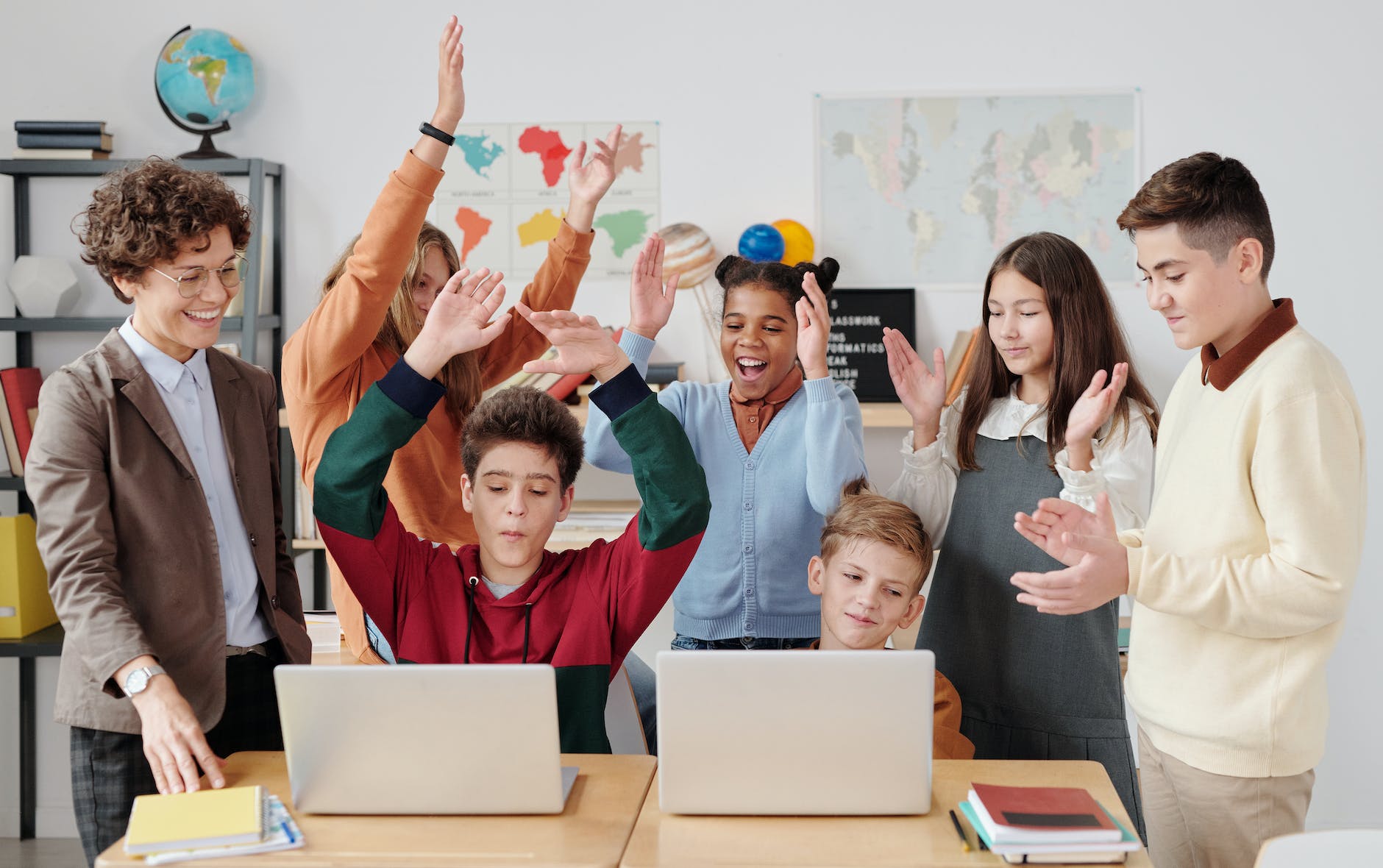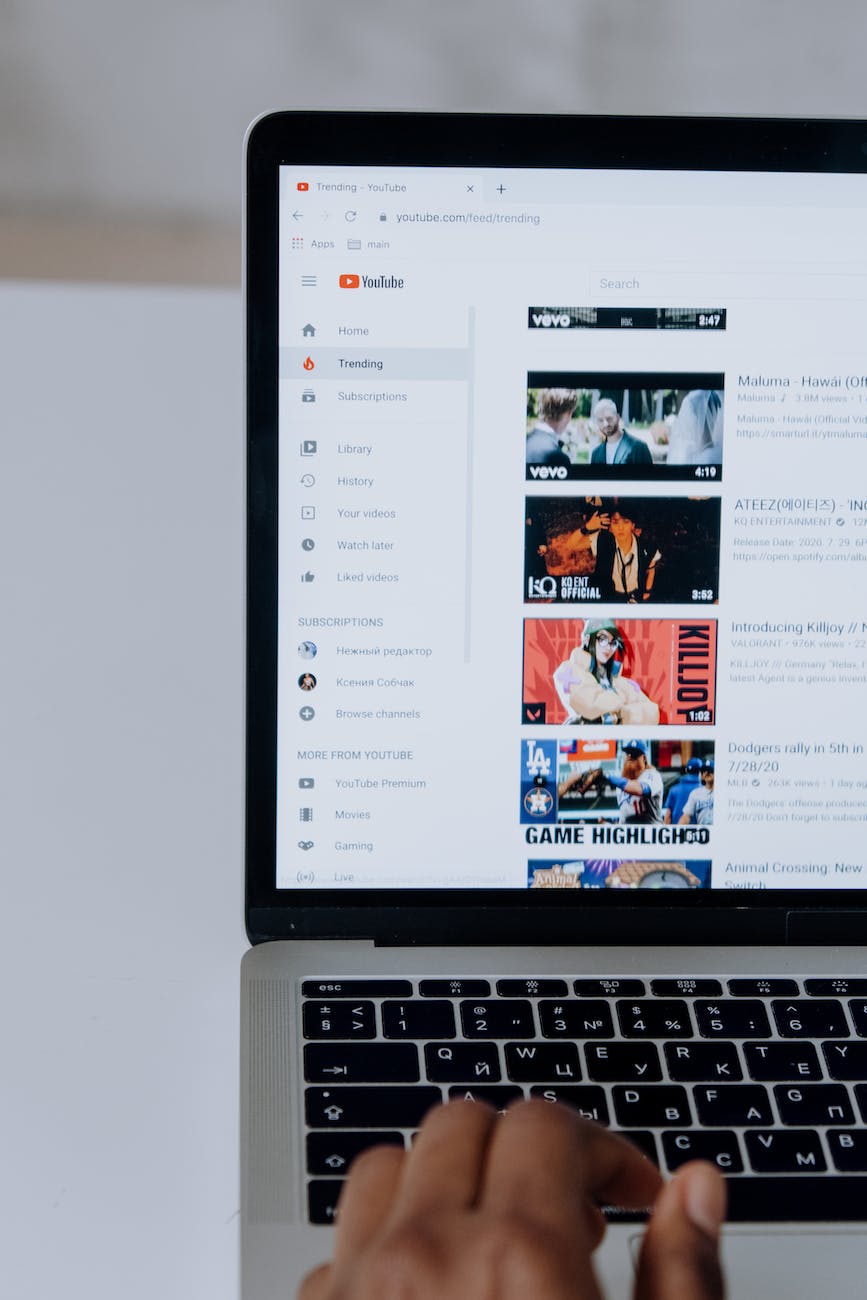Have you ever asked yourself how come – more often than not – students are reluctant to use textbooks? Well, it might have something to do with the clash between the prescriptive nature of the curriculum and the fluidity of learning. It is possible to construct and plan teaching but learning often happens in unpredictable ways.

Textbooks attempt to harness learning, and learners – consciously or not – defy these attempts. While adult learners are more or less used to playing by the rules, teenagers, being at that rebellious stage of their lives, audibly roll their eyes and demonstrate their boredom in every possible way when asked to do an activity from a textbook. While I personally love textbooks and strongly believe they are an irreplaceable source of learning, from almost two decades of teaching (and learning) practice, I know that there are plenty of other resources that can inspire, enhance, and enrich the learning experience.
In this article I would like to share with you 5 reasons why we should use authentic materials in our classrooms, especially with secondary students. “Authentic materials” here refers to any materials that haven’t been specifically created for the English classroom, i.e., films, film trailers, short clips, music videos, songs, poems, short stories, articles, interviews, podcasts, social media posts, memes – the list goes on.
A short disclaimer: for the purposes of this article, I am not going to discuss limitations related to the use of authentic materials imposed by copyright, school policies, cyber-security measures etc.
So, below are 5 reasons why you should look into this great variety of resources:
- Engagement. Nobody denies that engagement is a vital element of successful learning (see, for example, Svalbard & Askham, Pourdana & Tavassoli, Zhang etc.). Strongly related to intrinsic motivation, engagement means that students want to learn because it’s interesting. Using authentic materials offers a refreshing break from “boring” textbooks and helps capture the attention of the ever so demanding and picky teenage audience.
For example, in one of my recent IGCSE EFL lessons on interview writing, I used an interview with HoYeon Jung, a star of the acclaimed Netflix series Squid Game. I started with a multiple-choice question: students were shown a picture of the actress and given three names to choose from. They immediately stopped whatever they were doing (they usually use any free second to study Chemistry or Math) and I got their undivided attention from that moment onwards.

- Relevance. Relevance is one of the basic principles of learning, and it’s no secret that this is where textbooks often give in: they are designed for such large audiences that it is very hard for the authors to create content relevant to learners of a particular ethnic background, let alone school, classroom or subculture. Authentic materials, however, chosen by a teacher who knows their learners’ needs, interests, and preferences, can be meaningful to every single learner in the classroom.
Do you remember how exacerbated everyone was after the recent Billie Eilish concert in Kuala Lumpur? You might not, but my 15-year-old Malaysian students most probably do. I used this article to teach how to select information from an input text to write an argumentative essay. Could I have used a textbook? Certainly. Would my students have worked well? They probably would have as they are very hard-working, but I made that learning experience a bit more meaningful for them by presenting a piece of relevant authentic material.
- Versatility. Whereas textbooks rarely provide freedom for maneuver, authentic materials are clay in the hands of the teacher – and learners! Teachers can decide how to use them, and learners can come up with even more ways. And the best thing is that you don’t even have to only work with a text – written or spoken. Images and video clips with no words can be an amazing source of learning. For instance, I have recently discovered an amazing 3D artist, Mykael Henning. He creates stunning animations transporting you into the wild tropical landscapes, accompanied by carefully selected music pieces (see an example here). There is so much you can do with these! From asking to describe what is happening in the video for lower levels, to practising the present continuous, to writing how the piece makes them feel or creating a caption to go with it – use your imagination!
Students can go further and think about the place that 3D art is claiming on the map of contemporary art and culture or write a story based on the clip – the opportunities are almost infinite. And all this from one 15-second video clip with no words! By the way, if you are conscious about copyright, which we all should be, try to talk to the creator whose work you would like to use. You’ll be surprised how many emerging and independent young artists are happy to collaborate. (Mykael has kindly given his permission to be featured in this post – the editor.)
- Differentiation. It’s likely that an A1 and a B2 learner might watch the same YouTube video about how a pilot saved a flight from a disaster because they want to be pilots or aviation engineers. They will both learn from it though the latter will probably learn about how pilots avoid engine failure at the early stages of a flight while the former will learn the meaning of the phrase “engine failure”. These different outcomes are both meaningful and valuable for the respective learners.

Nurture your students’ autonomy by asking them what they want to do with the material you provide and allow them to do it. If it’s a song, maybe some will want to write down the lyrics from listening, some will want to create a gap fill activity, and some will try to explain the meaning of the song. The best thing is that all of your students will be engaged, regardless of their level, and all of them will take something away.
- A perfect match for the flipped classroom. I absolutely have to mention this because we can’t deny the importance of blended learning today. Its dominance, caused by the Covid-19 pandemic, might be in the past now, yet the flipped classroom won’t go away completely for many other reasons, which are a topic for a whole new article.
Textbooks are notoriously hard to use in the virtual classroom. One either has to purchase special software or scan the books, which we all know is very little fun to do and might pose copyright infringement. Whatever you can find on the web though is so easy to share when a screen separates you from your students – they are only a click away from whatever treasures you find for them. By the way, it works the other way around, too: your students can find something to share with you – again, it’s a way to promote learner autonomy, increase their agency, and make learning more meaningful.
These are only a few reasons why it is a great idea to turn to authentic materials when teaching English to teens. What are some others? How do you use authentic materials in class?
References:
Pourdana, N., Tavassoli, K. Differential impacts of e-portfolio assessment on language learners’ engagement modes and genre-based writing improvement. – Language Testing in Asia https://doi.org/10.1186/s40468-022-00156-7 (2022)
Svalbard, A., Askham, J. Teacher and learner perceptions of adult foreign language learners’ engagement with consciousness-raising tasks in four languages. – Language Awareness, Vol. 29, 2020, issue 3-4., pp. 236 – 254
Zhang, Z. Learner engagement and language learning: a narrative inquiry of a successful language learner. – The Language Learning Journal, Vol. 50, 2022, issue 3., pp. 378 – 392


